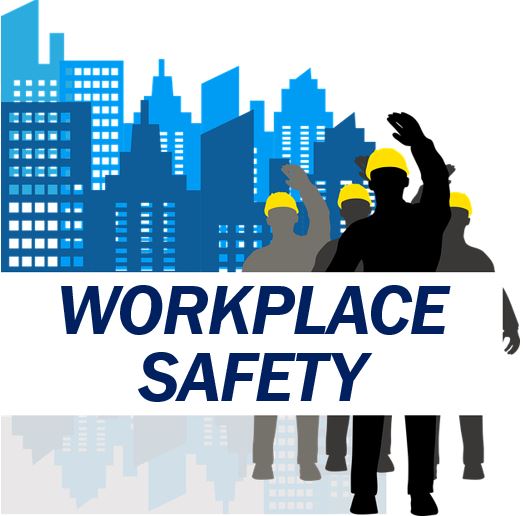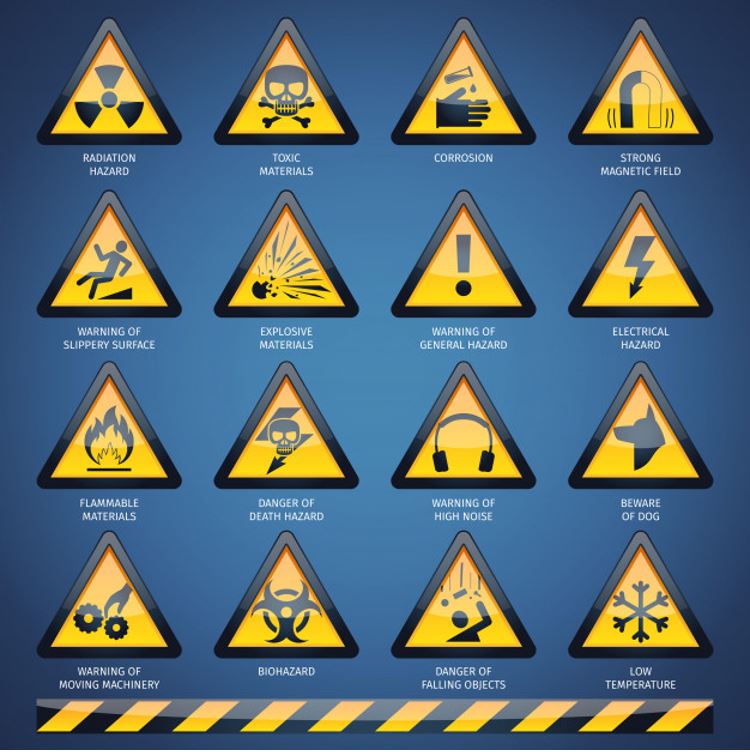The goal of the safety team is to assess the safety of a workplace and work conditions, determine whether there are fire or other injury risks and recommend steps to reduce risk and injury to human life. For a safety worker, every accident or incident, although tragic, should lead to future safety improvements.

Some safety precautions businesses follow are state mandated regulations and inspections may be regularly conducted by outside contractors. Other, more industry-specific, risks are unique to the building layout, chemicals, work equipment, production procedures, etc. and the safety of staff depends more heavily on carefully monitoring by a company employed safety team.
Most workplaces can make significant improvements to their safety protocols with some relatively simple modifications and inexpensive equipment installations:
Surveillance
When an accident or near miss occurs, a safety employee must investigate of the events leading up to the incident. Unfortunately, without video surveillance, the accuracy of the event relies on memory and the willingness of culpable parties to be truthful about what happened and factors that contributed to the mishap.
It is a natural tendency for people to hold back information when they anticipate being blamed. Video surveillance can easily solve that problem and make employees more aware of taking precautions and their behavior while being monitored.
Cord Protection

Tripping and fire hazards abound when heavy wires and cables are accessible to workers daily. If not properly protected from damage and secured to the floor, they represent an injury waiting to happen. Cords can easily be severed when the encounter heavy equipment or even chewed by rodents.
To secure thin to heavy-gauge cords firmly to the ground, and even withstand the weight of thousand of pounds without damage, the Cordapillar cord protector is an easy-to-implement, OSHA compliant product that can be installed quickly.
Fire Extinguishers
Fire extinguishers should be installed, inspected monthly and replaced when empty. The quantity required is based on size and layout of a room, presence of flammable liquid and fire hazard level of a building. Where they should be mounted should be marked. Different types of fire extinguishers are required in locations where lithium batteries are present.
Flammables
Ensure flammable materials are always in their proper locations, i.e. flammable storage cabinet, stored and secured properly by cage or chains.
Signage

Affixing precautions and warning signs about nearby hazards can increase awareness of risks in the vicinity.
Keep it Clean
Discarded papers, boxes, scraps, etc. can lead to fires and fall injuries. Simply maintaining a clean facility can reduce risk of injuries. Requiring employees to maintain their work areas can go a long way towards preventing accidents.
Educate Employees

Employees should be educated about company safety protocols and potential hazards prior to working in areas where they are exposed to them. Incorporating this education into the onboarding process can avert accidents due simply to ignorance of present risks.
Train others to understand hazards; once you have other people looking out for dangerous situations at a workplace, there are more eyes to identify risks before a fire or injury occurs.
Safety Equipment
In situations where steel-toed work boots, hard hats and gloves are necessary protection equipment, their use should be required and strictly enforced without exceptions. Per OSHA, employers are required to provide any PPE gear to employees.
Most of the above recommendations can be implemented in short order, but for a workspace to remain safe, a safety culture must be encouraged. Workers must feel comfortable reporting problems without fear of repercussions or retribution by workers involved. Instead, rewarding people who report problems and make positive changes is a more productive way to improve safety and encourage workers to have a good attitude about prioritizing it, too.
Interesting related article: “How to improve safety measures in your company.”

